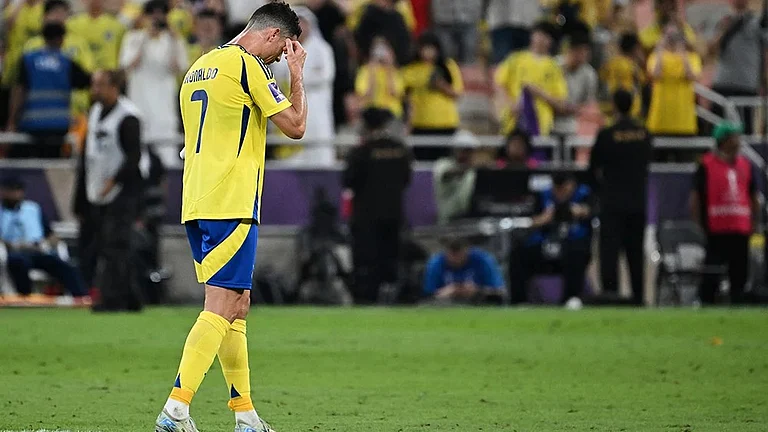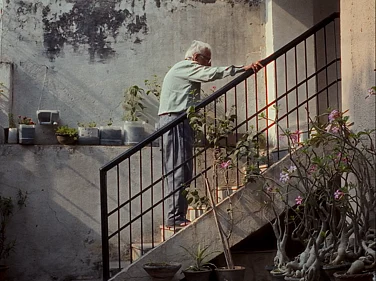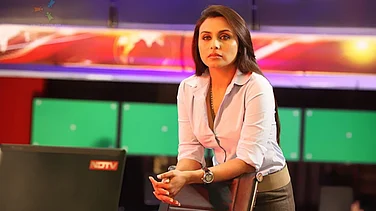The impact of the pandemic on India’s film industry brought attention to the below-the-line labour force that forms its invisible backbone. The disruption of shooting schedules, postponement of releases and shelving of projects impacted media production and distribution chains. This also created a new normal that demanded a careful deliberation of the wage inequalities and structural problems that underlie the glitz and glamour of the entertainment sector.
The lockdown became a moment of reckoning to understand how payment in the television industry was disbursed over a 90-day payment cycle, which meant that actors and production personnel were paid only at the end of the 90-day schedule. Against this backdrop, there were reports of suicides by cine-workers such as dubbing artists, theatre employees and daily wage labourers—a reminder of how hierarchical and caustic the film industry is, structurally—excluding the below-the-line labour force from any claims over the final product.
The cumulative impact of the lockdown led to the shutdown of theatres, many of which were single-screen ones struggling to survive amidst multiplex culture and OTT platformisation that has permeated the entertainment ecology. Thus, the pandemic gave way to a crisis resolution narrative, pivoted on the survival and identity of the cine-worker.
The #InThisTogether campaign organised by Virat Kohli and Anushka Sharma, and the contribution to the Chief Minister’s Relief fund by the late Lata Mangeshkar and Vicky Kaushal formed one end of the spectrum of responses. There were also efforts to directly contribute to trade unions supporting cine-workers, with Tamil actor Ajith supporting the Film Employees Federation of South India (FEFSI) and Salman Khan supporting the Federation of Western India Cine Employees (FWICE). Netflix India, with the support of Salman Khan, came up with a support package exclusively for the Movie Stunt Artistes Association. Netflix also supported the Producers Guild of India (PGI) with a financial package to be disbursed among daily wage-earners in the industry.
Economic arrangements and care networks were forged to pool in financial support collectively for those out of work. This took the form of emergency care packages, financial aid to support those who were furloughed or laid off, and relief and welfare funds to those facing contingencies. For instance, when the Kerala State Film Awards were declared in October 2020, the awardee for costume design had found a job as a painter, having switched to the construction sector as a daily wage worker to cover his expenses.
In the entertainment sector, the wagegap between the above-the-line and below-the-line units is so stark that questions of safety and welfare have taken a backseat. However, while questions of welfare and survival animate discussions on entertainment during the pandemic, it also draws our attention to how narratives of crisis have been used both to improvise already existing models as well as to experiment with new formats like OTT platforms to mobilise a diverse viewership.
The use of such collective assistance, mutual aid and community-driven initiatives during leaner times is not altogether new and has been part of systems of worker benefits in both informal industries such as pornography and sex work, as well as in more formalised sectors of the entertainment industry. In fact, trade unionism and organising for workers’ benefits has a long history in the Indian film industry. The formation of Bombay Cinema and Theatres Trade Association in 1926, the Madras Cinema and Theatre League in 1929 and the Motion Picture Society of India in Bombay in 1932 were meant to fortify the interests of producers, distributors and exhibitors. Continuing with this tradition of work, the Federation of Western Indian Cine Employees (FWICE) came up with relief packages with the support of the Producers Guild of India and the Indian Film and Television Producers Council (IFTPC) to provide ration and other supplies to support the daily sustenance of its employees during the pandemic’s lethal waves. Established in 1956 and having around 2.5 lakh members from around 32 craft organizations, FWICE has been at the forefront to ensure humane working conditions for and safety of cine workers, and has played a crucial role in foregrounding the rights of the workers in the industry.
In April 2021, FWICE came up with standard operating procedures in the context of Covid-19 guidelines and ways to streamline pre-production, production and post-production in adherence to the procedures. This included the reduction of sequences that included crowds, wearing masks, and sanitizing spaces where film work takes place. FWICE also announced that a monitoring team would be visiting sets to ensure that the guidelines were being followed during shooting. There were even carefully crafted statements released, explaining why the guidelines were constituted and how this could avoid the imposition of a total shutdown. With the shutdown of shooting with the second wave of Covid-19 in April 2021, FWICE addressed a letter to Uddhav Thackeray, the then chief minister of Maharashtra, to consider resumption of work in media and entertainment sectors as it was causing a huge setback to those in the industry left with no other source of income. Yash Raj Films, one of the foremost production houses, offered to shoulder the bills for vaccinating 30,000 members of FWICE as a way to convince the Maharashtra government to reopen the cinema halls. This was in tune with the drive at Mehboob Studios by the Production Guild of India to provide vaccines for its members and production crews. The non-cooperation notice that FWICE sent to the Tandav actor, Gauhar Khan, for allegedly violating Covid-19 rules by continuing shooting after testing positive—therefore, endangering those who worked with her—is one instance of organisations instituting rules for collective protection. However, while such regulations were pitched on the grounds of workers’ safety, they had a flipside as well.
The downsizing of staff as a part of the safety mechanisms also meant that many would remain out of work with no safety net and benefits. At the same time, the turn to OTTs in the face of theatre shutdowns also meant that OTT platforms, and cultivating dedicated patrons for such platforms, became the new normal. In this scenario, the Covid-19 phase actually became the testing ground for new models of distribution and profit, solidifying anxieties about whether collective action by cine-workers would now give way to the neoliberal model of freelancing.
Such anxieties and expression of dissent against neoliberal models has precedents before Covid-19. For instance, in his 2017 documentary Living on the Edge: Deglamorising Bollywood, Opender Chanana renders a portrait of Mumbai’s film and television production sectors through interviews with spot boys, production executives and organisers. The concerns that find mention in the film include the invisibilisation of labour, overtime shifts that go beyond the mandatory eight-hour regulation and worries related to safety and hygiene that junior artists and dancers have to tolerate in the absence of clean toilets and private changing rooms.
Such arrangements along with the precarious nature of employment normalise exploitative and abusive practices in the industry. The casteist and classist treatment meted out to extras and below-the-line workers in terms of separate food finds mention when one of the production personnel refers to this as an extension of the caste system and untouchability. In this arrangement, safety concerns often take the backseat; the onus is on individual labourers to prove that they are tough enough to survive in a competitive labour market.
While recounting the story of his friend—an injured stunt-artist—an art director, who had worked on Chanana’s documentary, said that not taking risk is not an option in the industry, as such workers are seen as cheap, replaceable assets. The film shows us that the resolution of many safety-related hazards including fire or electrocution ends up only in the payment of compensation to the family members of the deceased. Further, such compensation is limited only to ‘on-the-set’ death and injuries. A worker who dies while returning home after a late-night shift, for instance, would not be eligible for such compensation. Such injuries are portrayed as individual risks, rather than the outcome of profit-driven, cut-throat production practices. It is important to be mindful of the dangers in using the rhetoric of “We are all in this together,” as David Harvey points out, because it essentially negates the experience of those who cannot afford to take time off because they do not have the luxury to do so.
(This appeared in the print edition as "The Haves And The Have-Nots")
(Views expressed are personal)
Darshana Sreedhar Mini is assistant professor in the department of communication arts at the university of wisconsin-madison






















